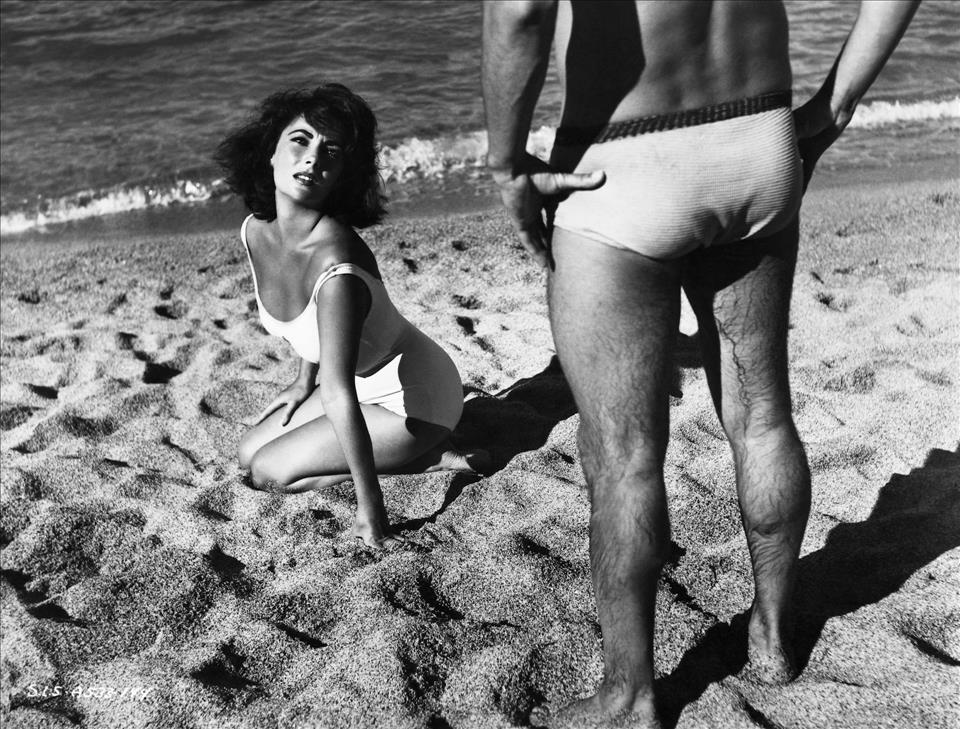
Half A Century Of The 'Male Gaze': Why Laura Mulvey's Pioneering Theory Still Resonates Today
It is a groundbreaking critique of classical Hollywood cinema, which Mulvey argues is constructed around patriarchal ideologies that shape how women are represented onscreen.
This foundational text transformed how scholars, film critics and audiences think about the relationship between gender and onscreen representation.
A critique of HollywoodMulvey came to prominence in the 1970s, a time when second-wave feminism was reshaping academic and cultural debates.
She made films, often with her partner Peter Wollen. These included the experimental feminist works Riddles of the Sphinx (1977) and Penthesilea (1974).
The radical counter-cinema ideas expressed in her film works would make their way into her 1975 essay.
First, Mulvey grapples with Hollywood's sexual politics, and the stark imbalances of power between men and women.
She suggests film adopts the viewpoint of a heterosexual male spectator : the camera lingers on women's bodies, framing them for erotic appeal, while men typically drive the action and control the narrative:
Mulvey says this“visual pleasure” is baked into the framework of Hollywood cinema. The way shots are composed, the way the camera moves, and the way scenes are edited all reinforce patriarchal power structures and objectify women .
How the 'male gaze' worksA central tenet of the essay is the concept of the“male gaze”. This term has become central to feminist debates, not just in film studies, but also in media studies , art theory and advertising .
Drawing on the psychoanalytic theories of Sigmund Freud and Jacques Lacan , Mulvey argues mainstream cinema positions women as passive objects of male desire.
Famously, she notes the:
This male gaze is comprised of three interconnected“looks”:
the look of the camera: how the film is shot (the framing, camera movement, editing and so forth) the look of the characters: how male characters gaze at female characters the look of the audience: how spectators are positioned to adopt a masculine viewpoint.When the camera eroticises a woman, when male characters watch her, and when the audience shares this view, the male gaze is at its most powerful.
Mulvey frequently uses psychoanalytic terms like“scopophilia” (the pleasure of watching) and“voyeurism” (secretly watching for pleasure) to explain how Hollywood cinema reinforces unconscious desires and power structures.
Her examples come from 1940s and 1950s Hollywood, and especially the films of Alfred Hitchcock. She notes how, in Rear Window (1954), James Stewart's photographer character spends much of the film secretly looking through his camera lens into other people's apartments.
In Vertigo (1958), James Stewart (this time playing a detective) voyeuristically stalks Kim Novak's Madeleine. He follows, watches and falls in love with a perfect image of female mystery and beauty. Hitchcock's shot selection makes the viewer complicit in his voyeurism.
We can see the male gaze in slow-motion or lingering shots that focus on sexualised aspects of women's bodies, in lighting and costumes designed to emphasise the erotic, or in narratives that halt for a moment of female display, before the main plot resumes.
Cameron Diaz's first appearance in The Mask (1994) is a clear example of the male gaze in full operation.
Critiques of Mulvey's argumentVarious scholars have challenged Mulvey's text. Feminist scholar Camille Paglia called Mulvey's argument“simplistic”, saying:
Others argue Mulvey failed to take into account spectator diversity, as not all viewers are heterosexual men.
In 1992, American theorist bell hooks coined the term“oppositional gaze” to offer a counterpoint to the sexualized, gendered gaze proposed by Mulvey that took into account racial power dynamics.
Mulvey herself has acknowledged these critiques. In her 1990 essay Afterthoughts on Visual Pleasure and Narrative Cinema , she revisits her arguments to account for more fluid and diverse spectatorship.
Mulvey's legacyMulvey's concepts from the 1970s can still be applied to contemporary films. The male gaze continues to manifest in filmmaking patterns designed to align spectators with male characters.
The James Bond franchise has long presented women characters as eroticised objects that exist merely for the hero's pleasure. And the critically acclaimed Blade Runner 2049 (2017) was criticised for treating female characters as sex objects.
Terms such as“female gaze” and“queer gaze” have become increasingly common on social media and in film analysis.
Mulvey's essay reflected a specific moment in 1970s feminist thought. She recently said , at the time, she thought it would eventually become“an archaeological object of theoretical and historical interest”.
Yet, 50 years on, her identification of the basic dynamics of Hollywood continues to shape much of our understanding of visual media.

Legal Disclaimer:
MENAFN provides the
information “as is” without warranty of any kind. We do not accept
any responsibility or liability for the accuracy, content, images,
videos, licenses, completeness, legality, or reliability of the information
contained in this article. If you have any complaints or copyright
issues related to this article, kindly contact the provider above.


















Comments
No comment